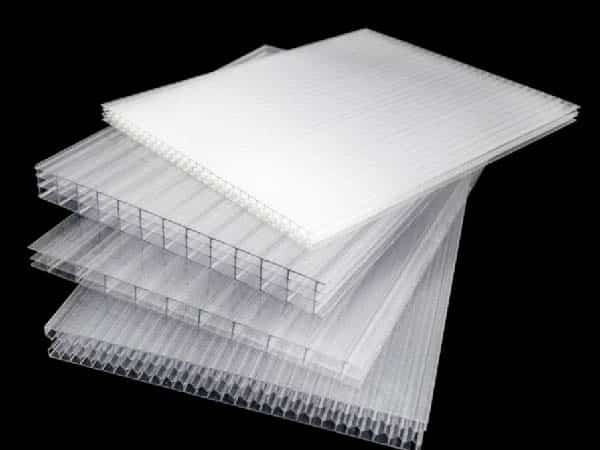Whether you are an experienced gardening master or a newcomer, you may have recognized that starting seedlings in a greenhouse can significantly enhance both the quantity and quality of seedlings. Greenhouses protect young plants from adverse weather and provide a stable, controllable environment that boosts growth efficiency and survival rates.
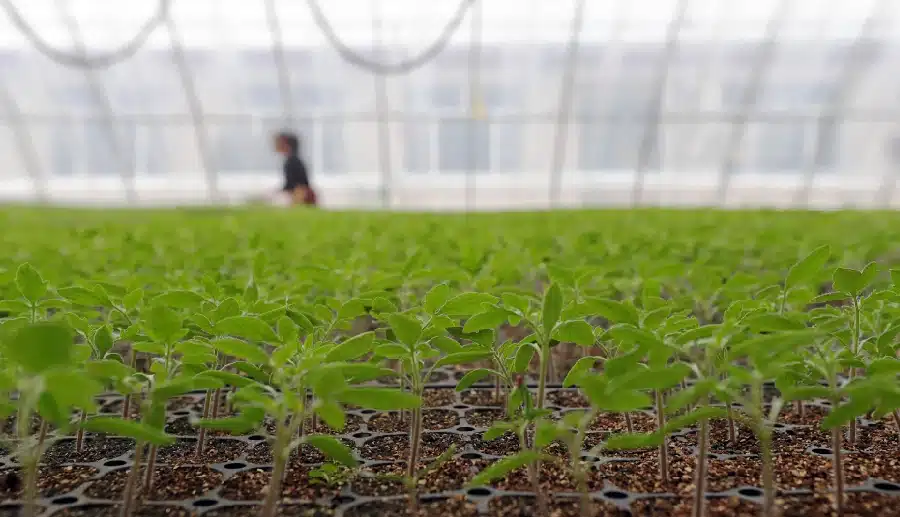
For successful greenhouse seedling cultivation, it’s crucial to prepare the greenhouse properly, select the appropriate tools and techniques, and thoroughly understand the specific needs of the plants. Equally critical is managing the microenvironment within the greenhouse, including temperature, humidity, and lighting. If you feel uncertain about where to begin, this article will give you a deeper insight into greenhouse seedling cultivation.
Why Read Our Article?
Founded in 2017, we are experts in commercial greenhouse design and manufacturing. We understand the environmental needs and planting techniques required for large-scale greenhouse cultivation, including corresponding equipment. If you have any questions or needs related to commercial greenhouses, feel free to engage in the discussion below or contact us directly.
Greenhouse Preparation
Choosing the right greenhouse is the first step if you’re planning to start seedlings. This involves selecting a type that fits your crops and local climate. For instance, in Northern China’s cold winters, many opt for insulated Chinese-style greenhouses, while in the tropical South, ventilated and heat-resistant greenhouses are preferred. Depending on your location, consider using glass for better light transmission or reflective materials to reduce internal temperatures.
Don’t Miss: 18 Different Types Of Commercial Greenhouses
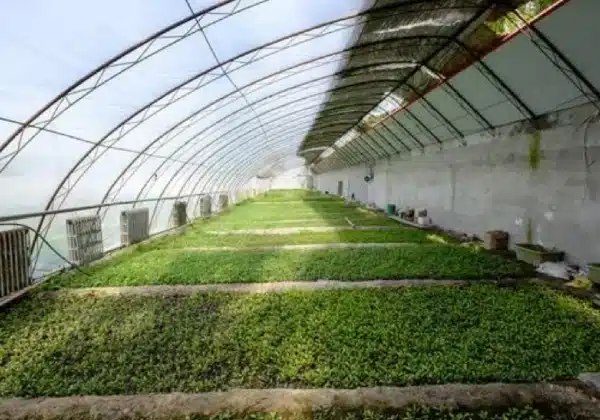
Moreover, if energy efficiency is a priority in your area, using double-layered materials and advanced sealing techniques can help reduce energy consumption. Remember to adjust internal conditions like temperature, humidity, and lighting according to the specific plants you are growing, and don’t forget to set up pest control and other necessary facilities.
Essential Tools and Materials for Greenhouse Seedlings
With your greenhouse ready, let’s explore the necessary tools and materials for successful seedling cultivation:
1. Planting Containers
Decide whether to use one container for the entire seed-to-seedling process or start seeds in one container and transfer them to another. Many growers prefer using plug trays for their ease of management and convenience in transplanting, although seeds on the tray edges may dry out faster. The main drawback of plug trays is the limited growth medium for each plant, which could restrict water availability as the plants grow.
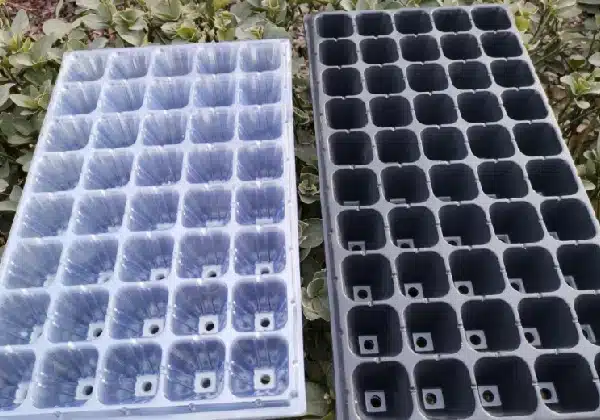
You might also consider using a seedling cart or room, which allows you to provide an optimal environment for seeds without having to operate the entire greenhouse, saving energy.
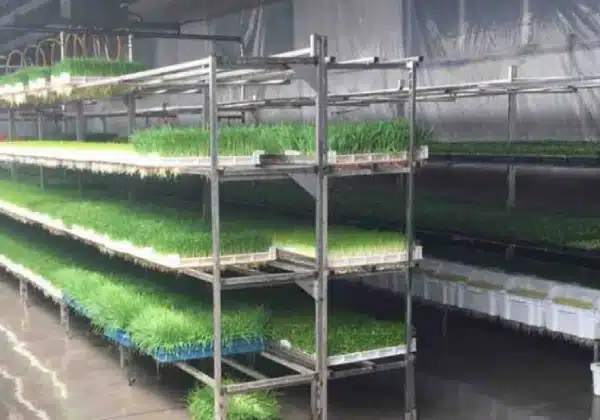
2. Greenhouse Substrates
This is a substitute for soil used in planting. It can be natural or synthetic, such as peat, vermiculite, perlite, coconut coir, or rock wool. Test the pH and solubility of the medium before planting. The ideal pH for most crops is between 5.7 and 6.2, with a low soluble salt content essential for optimal seed germination. Proper moisture management is crucial; the substrates should hold their shape when squeezed without dripping water.
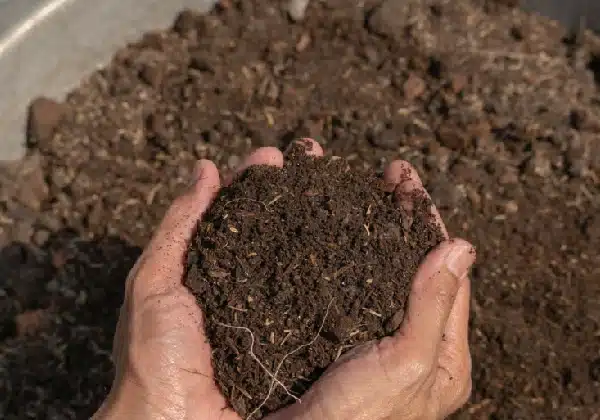
If you want to learn more, you can check out the article Greenhouse Substrates and Fertilization by Douglas A. Bailey, William C. Fonteno, and Paul V. Nelson of NCSU for more detailed information.
3. Irrigation Systems
For large-scale operations, consider an automatic or semi-automatic irrigation system to save time and labor while increasing efficiency. These systems deliver consistent moisture directly to plant roots, reducing leaf moisture and disease risk.
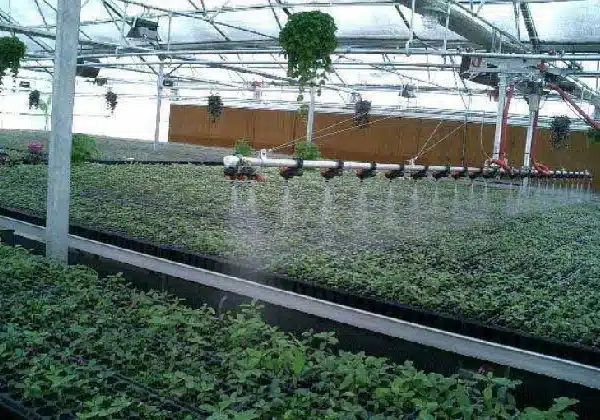
There are several types, including drip systems for precise water control, sprinkler systems for adjusting humidity, and capillary systems suitable for small, stable environments.
Don’t Miss: 6 Most Popular Irrigation Systems for Commercial Greenhouses
4. Other Tools
Labels for different seeds or plants are invaluable, especially when multiple varieties are grown. Tools like thermometers, hygrometers, soil moisture meters, and pH meters are vital for monitoring and adjusting greenhouse conditions to provide the best growing environment.
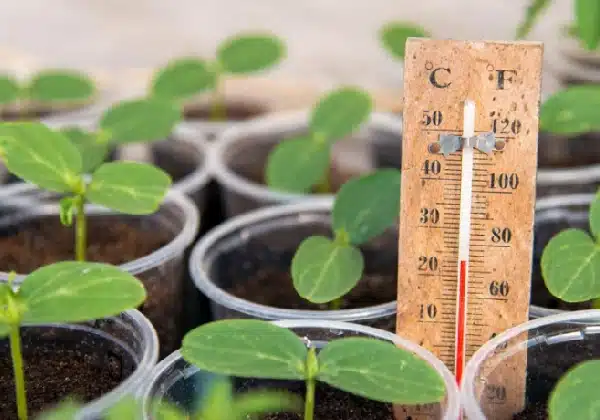
Managing Seedlings in Greenhouse
With all preparations complete, we can finally begin the actual seedling phase. This phase focuses on three key areas: selecting seeds, treating seeds, sowing techniques, and managing seedlings.
1. Seed Selection
Preferably, choose fresh seeds to ensure the highest germination rate. If you have last year’s seeds, first conduct a germination test to confirm their potential for growth. For new seeds, I recommend purchasing from a reliable local seed supplier, as high-quality seeds are fundamental for cultivating healthy plants. Opting for hybrid varieties is wise, as they tend to be more vigorous and may have specific disease resistances, enhancing their survival rate, albeit at a slightly higher cost.
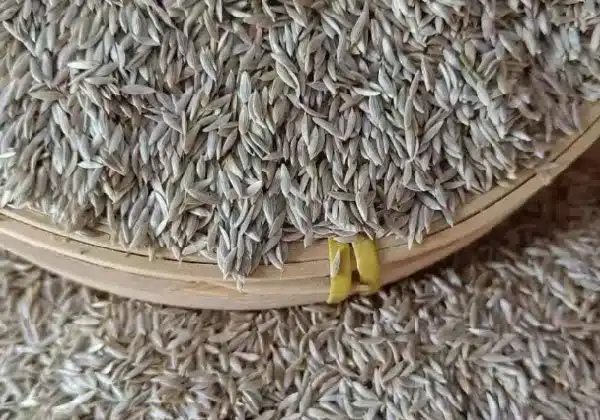
Remember, avoid buying seeds older than two to three years, as fresher seeds possess greater vitality and higher survival rates. Also, consider the crop variety, as different varieties are suited to various climatic conditions. For instance, in colder climates, select varieties that are cold-resistant and require less light to mitigate the effects of cold weather on the plants.
2. Seed Treatment
Before sowing, why not treat the seeds with a little spa treatment? Gently soak them in warm water to awaken them, helping them absorb water and germinate faster. Additionally, disinfecting them by soaking in a disinfectant solution can promote safer growth in soil and protection from diseases. After these treatments, place the seeds in an environment with suitable temperatures to encourage sprouting. Typically, when a tiny white tip appears, the seeds are ready to be sown; you don’t need to wait for all seeds to sprout.
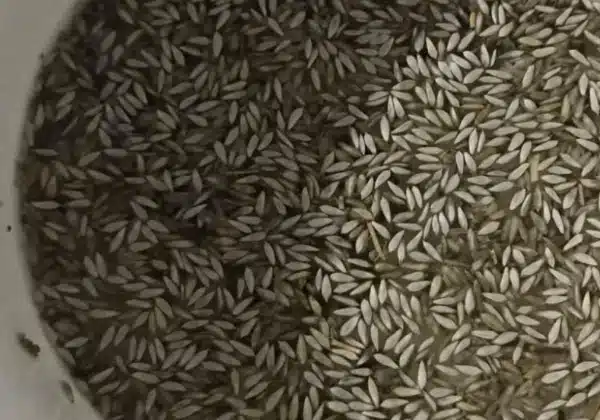
3. Sowing Techniques
With the greenhouse, substrates, tools, and seeds ready, we can commence sowing!
Determining the optimal sowing time is crucial. For spring planting, the ideal time is typically 6 to 8 weeks before the average last frost date in your area. If planting ornamental flowers, you may need to start even earlier, about 8 to 10 weeks before the frost date. Most seed packages provide detailed instructions. A sowing time calculator can help you pinpoint the best sowing time.
Concerning sowing depth, a general rule is that the depth should be about 3 to 4 times the width of the seeds. It’s usually better to sow slightly shallower, as seeds need adequate light and oxygen to germinate.
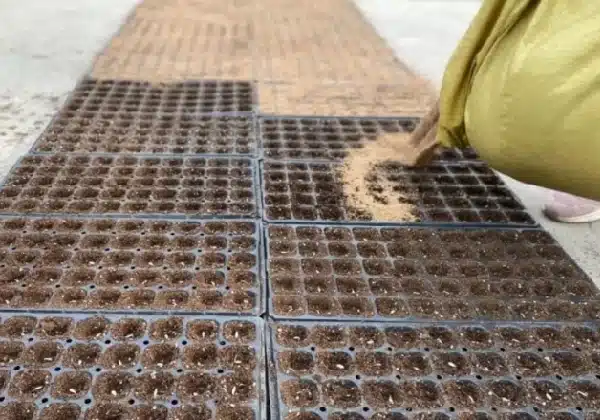
For seeds requiring light for germination, lightly cover them with a thin layer of fine perlite to keep the medium moist while allowing light penetration. For seeds needing darkness to germinate, consider covering them with a dark plastic bag or wrapping them in a few layers of newspaper until they sprout.
4. Managing Seedlings
Special attention to temperature and light is crucial when caring for seedlings.
Especially in cold weather, ensure warmth, possibly using electric heaters or warming blocks to prevent seedlings from freezing. For example, with temperature-sensitive plants like kale and tomatoes, if the nighttime temperature drops below 13 degrees Celsius, kale can bolt prematurely at the 6-leaf stage, and tomato seedlings may develop malformed fruits during the flower bud differentiation phase at temperatures below 13°C.
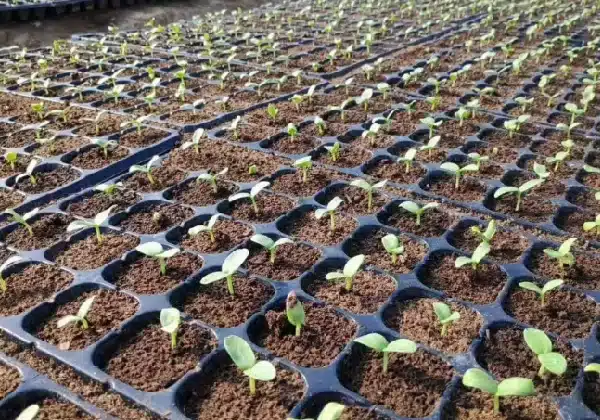
For plants requiring grafting, such as cucumbers and watermelons, perform grafting when the first true leaf of the rootstock just unfolds. After grafting, slightly lower the nighttime temperature in the greenhouse, allowing the seedlings to acclimate. The greenhouse should be completely enclosed for 3 to 4 days post-grafting, keeping it dark and maintaining temperatures at 28-32°C with relative humidity above 80% to promote survival; 5 to 6 days later, start ventilating. Control daytime bed temperatures at 25-28°C and nighttime at 13-15°C from grafting to the planting stage to ensure the seedlings are robust and the flower buds differentiate healthily.
Regarding lighting, even light-loving crops do not require 24-hour lighting. Like humans, plants need a proper “night” period to rest, facilitating better growth the next day.
| Vegetable Type | Daytime (°C) | Night (°C) |
| Cucumber | 25-28 | 15-16 |
| Sweet Melon | 25-28 | 17-20 |
| Chili Pepper | 25-28 | 18-21 |
| Eggplant | 25-28 | 18-20 |
| Tomato | 20-25 | 15-18 |
| Early Cabbage | 18-22 | 12-16 |
| Cauliflower | 18-22 | 12-16 |
Temperature Management Standards for Different Vegetable Seedlings
5. Transplanting Seedlings
When your seedlings are robust, it’s time to prepare for transplanting. Although the seedlings may appear strong in the nursery, their survival rate after transplanting might not be high. This is because the seedlings are transitioning directly from the comfortable greenhouse environment to the outside world, requiring time to adapt to new conditions like sunlight, low temperatures, and UV rays. Like us, plants need an adjustment period when transitioning environments.
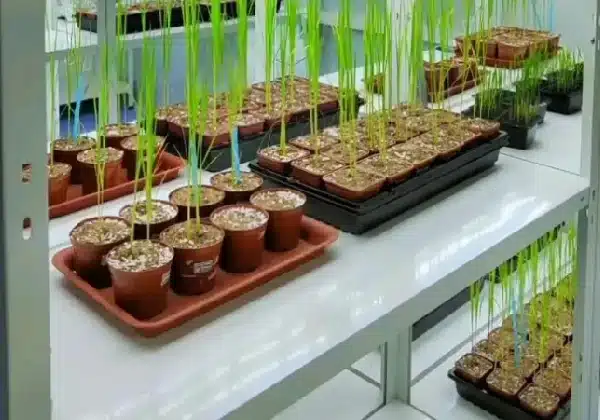
To aid the smooth transition of seedlings, we employ a “hardening off” process—a gradual acclimatization to the external environment crucial before transplanting. About 5 to 7 days before planting, gradually lower the daytime and nighttime temperatures in the nursery by about 5°C to mimic external low-temperature conditions. Open more vents to slowly match the greenhouse climate to the external climate. Two days before transplanting, cease watering to harden off the seedlings, helping them adapt to upcoming transport and new living conditions.
This preparation significantly enhances the seedlings’ adaptability and survival rate, allowing them to thrive in their new home.
| Vegetable Type | Tray Type (holes) | Seedling Age (days) | Transplanting Standard (number of leaves) |
| Cucumber | 72 | 25-30 | 2-3 |
| Sweet Melon | 72 | 15-20 | 2-3 |
| Chili Pepper | 72 | 60-70 | 8-9 |
| Eggplant | 50 | 60-70 | 6-7 |
| Tomato | 72 | 50-55 | 4-5 |
| Early Cabbage | 128 | 25-30 | 4-5 |
| Cauliflower | 128 | 25-30 | 4-5 |
Standards for Seedling Age of Vegetables
Nursery Greenhouse Maintenance and Management
Managing a greenhouse involves more than just keeping it clean; it also includes adjusting the internal environment according to seasonal changes. If you operate a smart greenhouse system, adjusting the environment through the control system is straightforward. However, with traditional poly greenhouses, seasonal management is crucial.
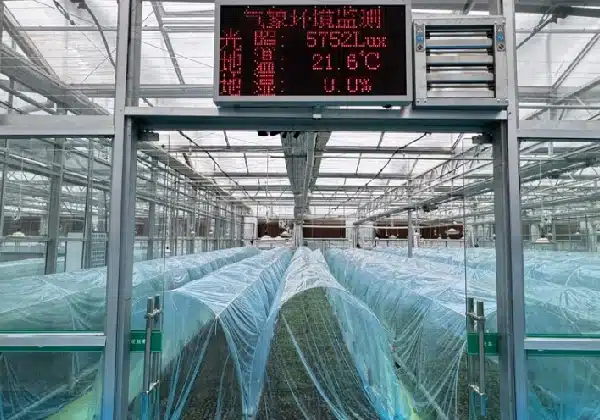
During the summer, aim to complete watering and fertilization before 10:30 AM and apply medicines or spray fungicides after 3:30 PM. At night, ensure the vents are open to maintain nighttime air circulation. Use facilities like skylights, side windows, thermal curtains, fans, and shading nets to coordinate operations and ensure a suitable greenhouse environment. In winter, the focus is mainly on maintaining temperature and humidity to protect the seedlings from the cold.
Conclusion
We have thoroughly explored each key step of greenhouse seedling cultivation, from selecting and preparing the greenhouse to seed treatment and seedling management. Whether you are an amateur enthusiast or a professional seedling cultivator, only through correct methods and techniques can we enhance the success rate of seedling cultivation, ensuring every seedling grows under optimal conditions.
As a professional greenhouse manufacturer, INSONGREEN hopes this guide will assist you in successfully cultivating healthy and robust crops, enhancing your joy and achievement in your seedling journey.
References:
- Starting seeds indoors – by the University of Minnesota Extension
- Seed Starting – by West Virginia University·Debbie Friend, Jennifer Friend, Michael Shambli
- Starting Seeds in Greenhouses – by University of Massachusetts Amherst
- Germination Chamber/Growth Room for Seedling Production – by the University of Massachusetts Amherst
- Greenhouse Substrates and Fertilization – by Douglas A. Bailey, William C. Fonteno, and Paul V. Nelson of NCSU

